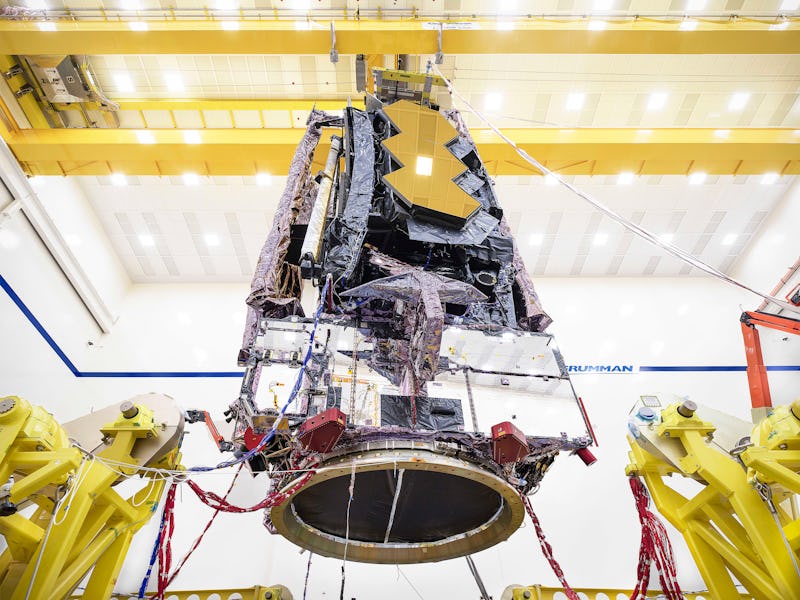NASA: A long-delayed telescope finally passes a “monumental milestone”
This golden spectator is ready for launch.

In 2021, NASA's James Webb Telescope will launch into space.
Over the course off its 30-day journey, the telescope will travel a million miles through space before it is ready to begin observing distant galaxies located billions of light years away.
Before NASA engineers straps this shimmery telescope onto a rocket, they need to ensure it can survive the harsh environment of space. By recreating the rough conditions of launch and deployment in space down here on Earth, scientists put the telescope through its toughest test yet.
And the results are in: James Webb is cleared for launch.
This week, the assembled telescope passed its final acoustic and sine-vibration testing at the Northrop Grumman’s Space Park in Redondo Beach, California. These two tests were the last in a series of environmental trials that had to be completed before James Webb is shipped to Arianespace's launch complex in French Guiana to prepare for takeoff.
“The successful completion of our observatory environmental tests represent a monumental milestone in the march to launch," Bill Ochs, Webb project manager for NASA Goddard Space Flight Center said in a statement. "Environmental testing demonstrates Webb’s ability to survive the rocket ride to space, which is the most violent portion of its trip to orbit approximately a million miles from earth."
During liftoff, the James Webb Telescope will have to endure shakes, rattles, and vibrations, as well as the deafening noise of the rocket launch.
The environmental tests simulated these conditions at two separate facilities.
First, the telescope was taken to an acoustic testing chamber, where it was blasted by sound pressure levels above 140 decibels to simulate the intense noise of the rocket launch. For context, 194 decibels is the highest pressure level that a sound wave can have in Earth's atmosphere.
Then the telescope was moved to the second facility, where it was placed on a specialized shaker table to simulate the low frequency vibrations that occur during liftoff.
Now it has passed these environmental tests, the James Webb Telescope will undergo a full systems checkup before it is placed in a shipping container to transport it to South America for its big day.
A team of engineers carefully lifting the James Webb Telescope and placing it in a mobile clean room before transporting it to a nearby testing facility.
The James Webb Telescope has been in the works for more than a decade, since 1996. It is meant to be a successor to the Hubble Space Telescope, which has fed scientists with valuable data and imagery on the cosmos for 30 years.
Once it launches, the James Webb Telescope will be the most powerful telescope ever designed, with an unprecedented ability to observe objects that are far away in the universe and therefore unfold the history of the cosmos. The telescope has a 21 feet-wide, 4-inch-thick mirror capable of peering back in time across the universe.
After enduring a series of delays, NASA recently scheduled the James Webb Telescope for an October 31, 2021 launch date. However, as the space agency continues to deal with the challenges brought on by the COVID-19 pandemic, the future remains uncertain for this golden observatory.